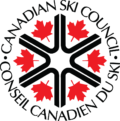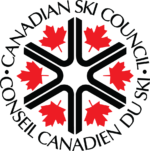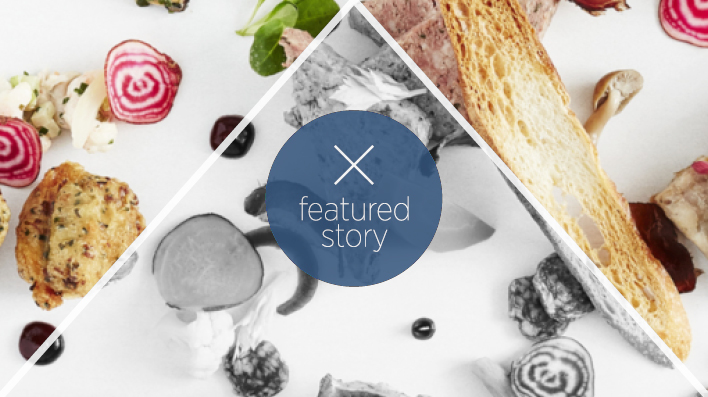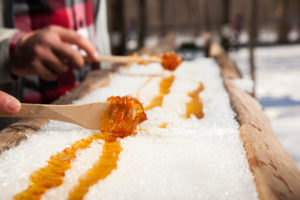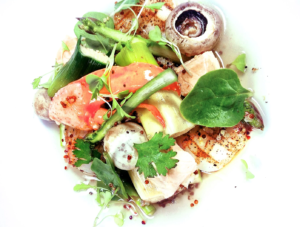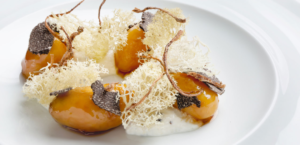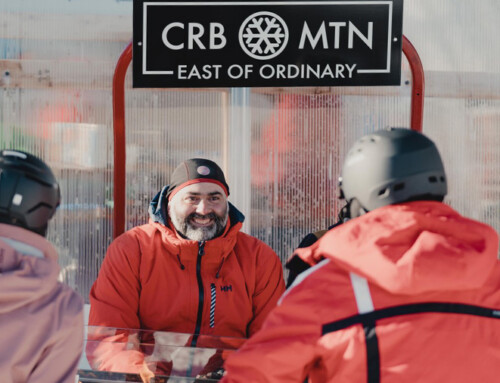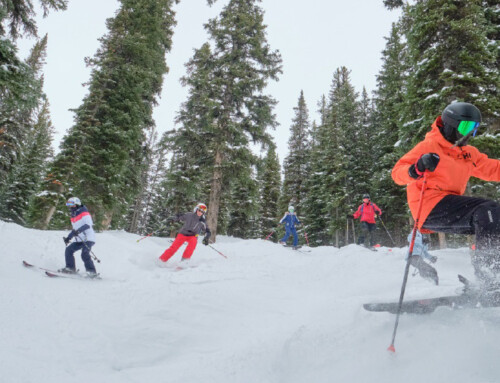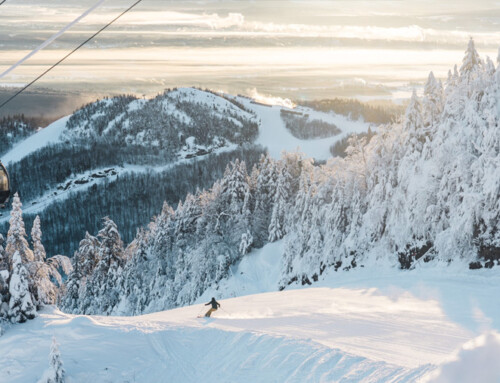AS A LIFELONG SKIER, I’VE BEEN CONDITIONED TO SALIVATE AT THE SOUND OF CERTAIN WORDS. Like Pavlov’s mutt, I start drooling the moment someone even whispers, “powder day,” “first chair,” or, “first tracks.” Living here in Quebec, there are two other words that never fail to whet my whistle: “bon appétit”.
Bon appétit is what we Quebeckers say whenever we gather to share a moment and a bite. You can hear it spoken on the slopes of Mont Tremblant and Mont Sainte-Anne, whenever skiers doff their skis, drop their poles, grab a Popsicle stick and scoop up a thick dollop of tire d’érable (piping hot maple syrup drizzled over pure, glistening white snow).
Bon appétit is an affirmation of good times, good taste and the good life. It’s something Quebeckers proudly trumpet as we stagger out of an otherwise awful greasy spoon bearing heaping mounds of hot, gooey, runny, messy and oh so disgustingly delicious poutine. (Poutine, with a lower case ‘p’, refers to a heart- attack inducing concoction of oleaginous French fried potatoes, chewy cheese curds and brown BBQ sauce, plus whatever other topping the chef has on hand. It is not to be confused with the potentially deadlier Poutine, note the upper case ‘P’, which is how Putin is spelled in French.)
Skiing in Quebec, you’ll find no shortage of times and places to say “bon appétit”, no matter your budget, style or tastes. In distilling the short list of restaurants that follow, I had to call in an army of experts for their invaluable advice, assistance and, sigh, relief. In Part One, we’ll look at the places that skiers that love to eat absolutely, positively cannot afford to miss when dining out in Quebec. In Part Two, we’ll examine just of the few of the myriad tasty options awaiting those who choose to dine in.
Mont Tremblant and the Laurentians
The hills north of Montreal are teeming with ski areas and fine eateries, from Sain-Sauveur to Mont Tremblant. According to Pierre Bessette, there are two restaurants in St-Jovite (a.k.a. downtown Tremblant) that should be on every self-respecting foodie’s bucket list.
Says Pierre, “sEb, Artisan Culinaire is a culinary odyssey with local and seasonal products.” It’s THE place to discover local bison, venison or a seven-course, tasting menu with wine. Also not to be missed is le Cheval de Jade. Says Pierre, “They serve French fine cuisine. Chef Olivier Tali was recently proclaimed Maître Canardier (Duck Master), and is one of only a handful of chefs trained and licensed to offer a famous, 300-year old recipe called Duckling à la Rouennaise.”
If your tastes run more toward fresh seafood and AAA+ beef, Pierre says you can bet on the Altitude Seafood & Grill in the Casino Mont Tremblant.
Quebec is the world’s largest producer of maple syrup, accounting for over 70% of global supply. To experience how distilled sap can transform otherwise ordinary ingredients into truly extraordinary feasts, Pierre recommends La Tablée des pionniers in St-Faustin-Lac-Carré near Tremblant. Says Pierre, “It’s owned by Louis-François Marcotte, a well known chef in Quebec who has his own TV show.”
For more budget-minded skiers seeking an authentic sugar shack experience, Pierre recommends La Petite cabane d’la côte in Mirabel, near Saint-Sauveur. Don’t forget to bring your own bottle of wine or beer.
For lunch, Pierre suggests Le Petit Poucet in Val David. The local landmark specializes in traditional Quebecois cuisine such as tourtière (meat pie), fèves au lard (baked beans) and tarte à sucre (maple syrup or sugar pie).
Les Cantons-de-l’Est (the Eastern Townships)
When I started researching this project, Danie Beliveau told me that there are now so many different restaurants, cafés and fine food emporiums to choose from in the Townships, that Tourisme Cantons-de-l’Est (TCE) had to organize them in three different categories. Chefs créaturs Cantons-de-l’Est, Cafés de Village and Créateurs de saveurs.
Chefs Créaturs assembles many of the region’s top chefs and their restaurants. “The emphasis here,” says Danie, “ is on refined, creative cuisine that often showcases local products such as Brome Lake duck, Stanstead rabbit, incredible cheeses du terroir as well as topnotch regional wines, ciders and beers.”
Skiers looking for a ski, dine and stay package should scope Les Sommets and the Hotel Chéribourg near Mont Orford. Chef Jerome Turgeon’s continental and regional specialties include roast salmon in maple and tandoori and roast duck magret with a balsamic and maple sauce.
Lumami, at the acclaimed Balnea Spa in Bromont, shows you just how gosh, darn delicious even the healthiest ingredients can be when they’re prepared by skilled hands. Sinners can rejoice scarfing the homemade marshmallow and Wild Turkey bourbon caramel.
Also, not to be missed are Restaurants Auguste, Le Bouchon and Lo Re in Sherbrooke, and the Four-Diamond, Restaurant Le Hatley at the Manoir Hovey in North Hatley.
For skiers looking for more casual fare, TCE has also assembled a list of tasty cafés. The food here is always homemade. Fresh and delicious.
My wife swears that no one serves up more yum for the dollar than the Coop du Grand-Bois in Saint-Étienne de Bolton., which is conveniently situated between Orford, Bromont and Owl’s Head.
If your idea of divine terrestrial bliss includes all things chocolate, add the Confisserie Bromont to your list. Be sure to tour the Musée du Chocolat on site.
Québec City Region
Serious foodies visiting the Québec City area will want to ski all day (or morning) at Stoneham or Mont Sainte-Anne, and then hightail it 30 minutes down the road to wine and dine in beautiful, historic Québec City. This isn’t to say you can’t eat well eat either of these two great hills. It’s just that few North American cities can match the sheer variety and selection of fine, quality restaurants that you’ll find in Québec.
Paule Bergeron suggests that foodies new to Québec City should take the Food Tour. On my last visit there, I did just that, but not before I had lunch at Chez Boulay Comptoir, which adjoins the entrance of the posh, boutique Hotel Manoir Victoria (HMV). A scant four years younger than the iconic Château Frontenac, the HMV showcases a beau mélange of modern comfort and art with splendid French antiquity. It’s in a great location just inside the Old Walled City. It is also home to two fabulous food emporiums: the aforementioned Comptoir and the tony Chez Boulay Bistro Boréale.
Both showcase Nordic Cuisine (think elk, fish, wintergreen, seabuckthorn berries) as conceived and created by Chefs Jean-Luc Boulay and Arnaud Marchand. For lunch I shared salmon in puff pastry, a Forestière mushroom quiche and a pumpkin seed croissant. Everything was delish and ready to go.
It took all I could muster to bid the Comptoir adieu and stagger up the hill to join the Food Tour. The walking tour starts off inside the Tourisme Québec building, which is just across the park from the iconic Château Frontenace. Be sure to get there early, so you can admire the views of the Saint Lawrence River from the ramparts and maybe enjoy a toboggan ride or two.
As our guide, François walked us through old, walled Québec, he would occasionally stop to regale us with tales of the history of North America’s oldest city, as told through its architecture – French, English, European, Canadian. From the outset, he made it clear that when it came to food, we were the experts. He was merely the guide.
Our first stop was Chez Jules, a classic French bistro with menus written in white chalk on blackboards. Our boudin noir was delicious, as was the red Shiraz.
Next, we scarfed some ice-smoked salmon and drank Caribou (red wine and whisky) at La Buche, a very urbane French Canadian sugar shack that boasts the “best bacon in the world.”
At Bistro Tournebroche (the brainchild of Master Chef Stephane Hotte) in conjunction with l’Hotel du Vieux Québec, I discovered ‘eco-responsible eating’. It sounded dreadful until I tried the wild boar paté with marmalade and some Vendal Cliché Variety wine. Both were scrumptious.
We then walked to Délices d’Érable et Cie and sampled just a few of the many ways to enjoy Quebec’s favourite export, excluding taking home some maple-with-everything for yourself, your families and friends. As François reminded us, “This is not a shopping tour.”
Our next stop took us outside the old city walls and along Boulevard Saint-Jean Baptiste. Snack Bar St. Jean a.k.a. 522-GRAS, boasts thirteen varieties of poutine, which is Quebec’s second national dish and a leading cause of coronary obstruction. (Kidding.)
We then ventured up the road where we gobbled a delicious buckwheat crêpe with ham and cheese and a superb white apple cider at le Billig (that’s the name of the cast iron pan that’s used to make crêpes in Brittany, France).
Our last stop was Le Musée du Chocolat, a museum/chocolaterie dedicated to spreading the gospel of chocolat in all its forms (would you believe a working cuckoo clock made of chocolate) and flavours.
According to François, many of the foodie trends on display inside the wall actually began outside the wall along Boulevard St. Jean Baptiste. The area is alive, fragrant with the scents of exotic foods (think Thai, Lebanese, Japanese, etc.) and bustling with students and young people. There are all manner of shops, bookstores, grocery stores, and the ubiquitous SAQ (liquor store).
The Charlevoix
Once a favourite summer destination among wealthy Americans socialites who travelled here by steamship, the magnificent Charlevoix occupies the North Shore of Saint Lawrence River, between le Massif du Charlevoix and la Baie Sainte-Catherine. Le Cirque du Soleil was founded here, in the picturesque coastal town of Baie Saint-Paul. Today, this ruggedly handsome land is teaming with fine artists, skilled artisans and all those devoted to perfecting the fine art of living and eating. Many consider it to be the birthplace of the current wave of cuisine du terroir that has swept the entire province.
How fitting then, that the Charlevoix is also home to the Flavour Trail, which unites more than 40 food producers and restaurateurs between la Petite-Rivière-de-Saint-François and la Malbaie (formerly Murray’s Bay).
Perhaps the first North American ski area to ban all fast food from its site, le Massif du Charlevoix quickly garnered a well-earned reputation for serving up mighty fine slope-side food to match its mighty fine skiing. For skiers staying in next door Baie-Saint-Paul (BSP)or venturing east to la Malbaie, it is but a taste of things to come.
Mitémo Chevalier of Tourisme Charlevoix highly recommends three restaurants in BSP. Les Labours, which is situated in the posh La Ferme Hotel, specializes in serving local delicacies such as foie gras from the nearby Ferme Basque, as well as locally produced pork, lamb and guinea fowl.
Not to be outdone, Chef Thierry Ferré of le Mouton Noir (Black Sheep) has garnered a reputation second-to-none by showcase many of the finest ingredients the region has to offer.
For more casual fare (think smoked salmon, smoked meat, nachos, etc.), and some of the finest craft beer anywhere, be sure to stop in at le Saint-Pub. The atmosphere is relaxed. The food, satisfying.
Just down the road in La Malbaie, skiing foodies are in for double treat. Though modest in size, le Mont Grand-Fonds is one of Quebec’s best-kept secrets. Think tons of snow, tasty terrain, some of the finest cross-country and snowshoe trails anywhere, and, my absolute fave: zero crowds.
Equally delectable are the restaurants in and around la Malbaie. My two favourites are les 3 Canards and le Charlevoix in the très posh Fairmont Manoir Richelieu.
The former was originally called les trois docs in honour of the three doctors who built the magnificent cottage (now an inn) in scenic Pointe-au-Pic. Over time, les trois docs became les trois ducks a.k.a. les Trois Canards, hence the name. The views of the Saint Lawrence are spectacular. The service is impeccable. The food is impressive.
The same can be said of the even more spectacular Fairmount Manoir Richelieu, which is just down the road and next door to le Casino de Charlevoix. Known for producing some of Quebec’s finest chefs, the Manoir is home to three restaurants. The most stunning is le Charlevoix which serves the Full Monty of regional delights, including duck, foie gras, emu, lamb, pheasant and gourganes (a succulent bean that yields a heavenly creamed soup).
As always, “Bon appétit!”
– by Dave Fonda, for S-Media
Author’s Note: I’d like to thank Danie Beliveau, Media Relations Tourisme Cantons-de-l’Est, Pierre Bessette of Touri Bess Communications Inc., Paule Bergeron of Tourisme Québec (Quebec City Region) and Mitémo Chevalier, Project Manager for International Marketing at Tourisme Charlevoix for all their help. Thank you one and all. I am forever in your debt for helping me research and compile this guide and, in so doing, helping me delay my untimely death by good taste and gluttony. Merci.
